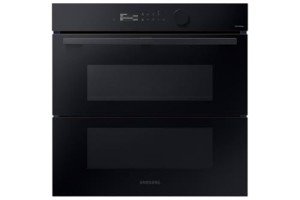Understanding Self-Cleaning Ovens: A Comprehensive Guide to Types and Features
Self-cleaning ovens have ended up being a staple in modern-day kitchens, providing a convenient option for preserving a tidy cooking environment without the labor-intensive scrubbing. With Self Cleaning Oven Features and features offered, picking the best self-cleaning oven can make a considerable difference in both cooking experience and kitchen hygiene. This post delves into the kinds of self-cleaning ovens, their systems, and essential factors to consider for prospective buyers.
Kinds Of Self-Cleaning Ovens
There are mostly four types of self-cleaning ovens, classified based upon their cleaning approaches. This classification assists users comprehend how each type works and which might fit their requirements best.
| Type | System | Pros | Cons |
|---|---|---|---|
| Pyrolytic | High-temperature cleaning | Efficient on hard discolorations | High energy consumption |
| Steam | Uses steam to loosen grime | Eco-friendly, less energy use | May need regular water refills |
| Catalytic | Covered with catalytic product | Constant self-cleaning | Coating can wear out over time |
| Self-Cleaning with Removable Part | Parts can be eliminated for cleaning | More thorough cleaning options | Not a full self-cleaning oven |
1. Pyrolytic Ovens
Pyrolytic ovens make use of extreme heat, usually in between 800 ° F and 1000 ° F, to incinerate food particles and grease within the oven cavity. The process reduces residue to ash, which can be easily wiped away when the oven cools off.
Benefits:
- Highly efficient for baked-on spills and tough discolorations.
- Requires minimal effort post-cleaning-- just clean the ash away.
Downsides:
- Consumes a considerable amount of energy.
- The heats can cause the exterior of the oven to become hot, presenting a possible safety danger.
2. Steam Ovens
Steam cleaning ovens operate by using steam to loosen grime and food particles. This method includes presenting water into a heated chamber where it vaporizes, making it simpler to wipe away the loosened up debris.
Benefits:
- Eco-friendly option, using less energy compared to pyrolytic ovens.
- No harsh chemicals are needed for cleaning.
Disadvantages:
- Regular water replenishment is needed for the steam function.
- Might not be as efficient on tough, baked-on spots.
3. Catalytic Ovens
Catalytic ovens are lined with panels that are covered with a special catalytic material that takes in grease and grime while baking. When the oven is warmed to about 400 ° F, the coating triggers and breaks down the grease.
Benefits:
- Offers constant cleaning during routine cooking operations.
- Reduces cleaning frequency because the panels are created to degrade discolorations.
Drawbacks:
- Coatings can disappear with time, needing panel replacement.
- Less efficient for really difficult deposits compared to pyrolytic cleaning.
4. Self-Cleaning Ovens with Removable Parts
Some ovens include detachable parts, such as the oven rack or the bottom tray, making it simpler to wash those components individually while the main cavity stays beautiful.
Advantages:
- Comprehensive cleaning options depending upon the user's preferences.
- Permits more thorough maintenance of parts that may not reach high temperature levels.
Drawbacks:
- This choice does not include a complete self-cleaning system.
- Needs manual commitment to clean the detachable components.
Considerations When Buying a Self-Cleaning Oven
When wanting to purchase a self-cleaning oven, numerous aspects need to be taken into consideration to guarantee you get one that fits your kitchen requirements and way of life.
Cleaning Mechanism:
- Choose in between pyrolytic, steam, catalytic, or a combination of removables based on your cleaning preferences.
Capability:
- Consider the size of the oven that will fit your cooking routines and cooking area area.
Energy Efficiency:
- Look for models that abide by energy efficiency requirements to conserve on energy costs.
Safety Features:
- Ensure the oven has features that lessen the risk of burns, specifically in pyrolytic models.
Alleviate of Use:
- Features like self-timers or push-button control options can boost the user experience.
Frequently asked questions
1. How typically should I use the self-cleaning function?
It is typically suggested to utilize the self-cleaning feature each to 3 months, depending on usage and the level of build-up.
2. Is it safe to use the self-cleaning function?
Yes, as long as safety precautions are followed. Make sure that the oven door stays locked throughout the cleaning process and keep pets and kids away.
3. Can I utilize routine cleaning products in a self-cleaning oven?
No, you should not use routine oven cleaners as they can harm the self-cleaning surfaces and the heating components.
4. The length of time does the self-cleaning cycle take?
The self-cleaning cycle can take anywhere from 2 to 6 hours, depending upon the type of oven and the cleaning approach utilized.
5. Do self-cleaning ovens have any disadvantages?
While self-cleaning ovens can save time and effort, they may consume more energy throughout the cleaning process, and some methods might be less efficient on extreme discolorations.
Self-cleaning ovens provide an innovative approach to maintaining cooking area hygiene and benefit. With different types offered, each with its own benefits and disadvantages, it's crucial for customers to examine their cooking routines and requirements before making a purchase. By understanding the various cleaning mechanisms, prospective buyers can pick an oven that will not just meet their culinary needs but also offer long-term ease of maintenance and efficiency.

